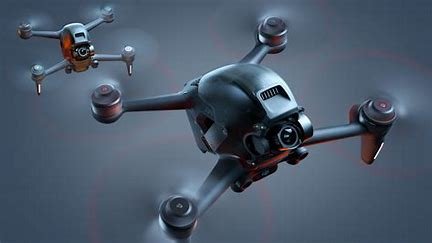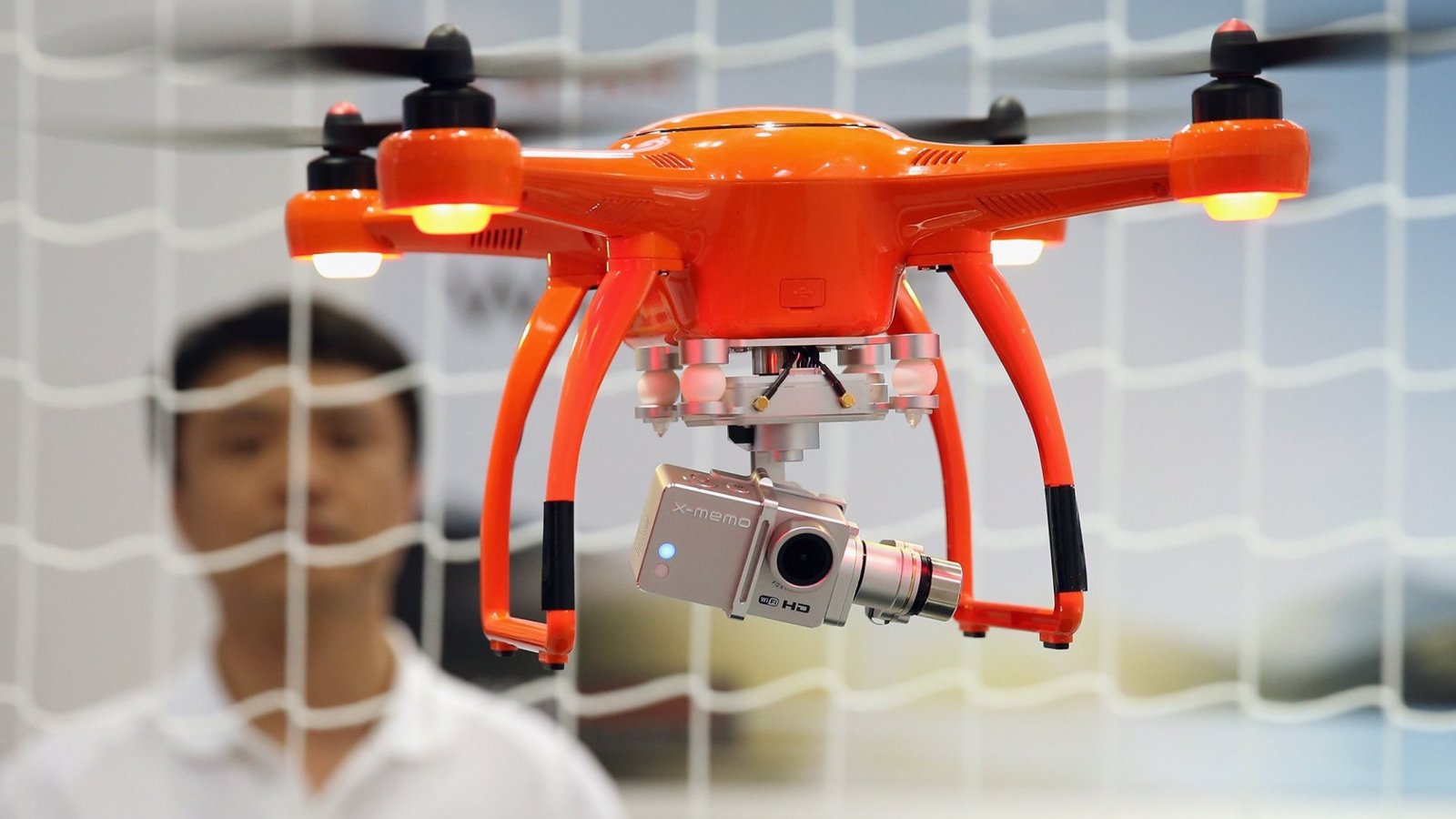Drones, or Unmanned Aerial Vehicles (UAVs), have transitioned from niche gadgets to essential tools that redefine how industries operate. These flying machines have sparked innovations across sectors, offering unparalleled efficiency, cost-effectiveness, and accessibility. In this comprehensive article, we’ll explore what drones are, their types, key applications, benefits, challenges, and the future of drone technology.

Drones: Revolutionizing Industries and Transforming the Future
What Are Drones?
Drones are aircraft operated without an onboard pilot. Controlled remotely or programmed to execute autonomous tasks, drones utilize technologies like GPS, sensors, and AI for navigation and task execution. With sizes ranging from pocket-sized models to large industrial machines, drones cater to recreational, commercial, and defense needs.
Types of Drones
The diversity in drone designs makes them adaptable to various applications. Below are the main categories:
- Multirotor Drones
- Features: Compact, stable, and easy to maneuver.
- Use Cases: Photography, videography, and short-range surveillance.
- Popularity: The most common type among hobbyists and professionals.
- Fixed-Wing Drones
- Features: Airplane-like structure, capable of covering large distances.
- Use Cases: Surveying, mapping, and military reconnaissance.
- Limitation: Requires a runway or launcher for takeoff.
- Single-Rotor Drones
- Features: Helicopter-style design with one primary rotor.
- Use Cases: Heavy payload transport and extended hover missions.
- Efficiency: Offers longer flight times compared to multirotor drones.
- Hybrid VTOL Drones
- Features: Combines the vertical takeoff of multirotors with the efficiency of fixed-wing models.
- Use Cases: Ideal for long-distance operations with complex terrains.
- Advantage: Versatility in both urban and remote environments.
Applications of Drones
Drones have disrupted traditional practices across multiple industries, unlocking new possibilities.
- Aerial Photography and Cinematography
- Stunning visuals captured from unique angles.
- Widely used in filmmaking, social media content, and advertising.
- Agriculture
- Precision farming through real-time crop analysis.
- Pesticide and fertilizer spraying for increased efficiency.
- Livestock monitoring in expansive fields.
- Logistics and Delivery
- Revolutionizing last-mile deliveries with faster, eco-friendly solutions.
- Major brands like Amazon are investing heavily in drone delivery systems.
- Construction and Real Estate
- Generating 3D site maps for planning and progress tracking.
- Marketing properties with immersive aerial tours.
- Public Safety and Disaster Management
- Thermal imaging for search-and-rescue operations.
- Monitoring floods, wildfires, and other disasters in real-time.
- Assisting police in crime surveillance and traffic management.
- Environmental Conservation
- Monitoring endangered species and tracking wildlife habitats.
- Combatting illegal activities like poaching and deforestation.
- Military and Defense
- High-precision surveillance for intelligence gathering.
- Supporting tactical operations and delivering supplies to remote bases.
Benefits of Drones
The rise of drones is fueled by their numerous advantages:
- Cost-Effective Operations
Drones eliminate the need for expensive equipment like helicopters or large crews, making them a budget-friendly option for many industries. - Unmatched Accessibility
Their ability to access hard-to-reach or hazardous areas ensures safety while expanding operational scope. - Enhanced Data Collection
Advanced sensors and imaging tools enable drones to gather accurate, real-time data for better decision-making. - Time Efficiency
Tasks like mapping or surveying, which once took days, can now be completed in hours with drones. - Environmental Benefits
Electric-powered drones produce minimal emissions, aligning with global sustainability goals.
Challenges of Drone Technology
Despite their potential, drones face several challenges that hinder widespread adoption:
- Regulatory Constraints
- Stringent aviation laws govern where and how drones can operate.
- Licensing requirements can create barriers for small businesses and hobbyists.
- Limited Battery Life
- Most drones have a flight time of 20–30 minutes, restricting their operational range.
- Innovations in energy storage are needed to address this limitation.
- Weather Dependency
- Adverse conditions like strong winds, rain, and extreme temperatures can compromise drone performance.
- Security and Privacy Issues
- Vulnerable to hacking and misuse for illegal activities.
- Raises ethical concerns about surveillance and data collection.
- Skill Requirements
- Advanced drones require skilled operators, often necessitating training and certification.
The Future of Drones
The future of drones is bright, driven by rapid advancements in technology and increased adoption across industries. Here are some trends shaping the drone ecosystem:
- Autonomous Drones
AI-powered drones capable of decision-making and obstacle avoidance will dominate the market. - Drone Swarms
Coordinated fleets of drones working together have applications in agriculture, search-and-rescue missions, and defense strategies. - Improved Battery Technology
Innovations like solid-state batteries and solar-powered drones will extend flight durations and operational capabilities. - Integration with IoT
Drones connected to smart networks will enhance real-time data sharing for logistics, agriculture, and urban planning. - Passenger Drones and Urban Air Mobility (UAM)
Concepts like flying taxis are set to redefine urban transportation, with companies such as EHang and Uber leading the way.
How to Choose the Right Drone
Selecting a drone depends on your purpose and requirements. Here are a few tips:
- Define Your Use Case
Are you using it for photography, industrial inspections, or recreational flying? Choose a drone that aligns with your goals. - Set a Budget
Drones range from affordable beginner models to high-end professional devices. Determine your spending capacity beforehand. - Evaluate Features
Look for GPS, camera quality, obstacle avoidance, and flight modes based on your needs. - Understand Regulations
Familiarize yourself with local drone laws to avoid penalties and ensure safe usage. - Consider Brand and After-Sales Support
Opt for trusted brands that offer warranties, spare parts, and robust customer service.
Conclusion
Drones are more than just flying gadgets—they are tools that are reshaping industries and creating new opportunities. From capturing breathtaking visuals to delivering lifesaving aid, their impact is profound and far-reaching.
As advancements in drone technology continue, their applications will expand further, driving innovation across sectors. Whether you’re a beginner exploring the hobby or a professional integrating drones into your work, now is the perfect time to harness the potential of these remarkable machines.
The sky is no longer the limit—drones are taking us to new heights!
Internal link:- ragdi









